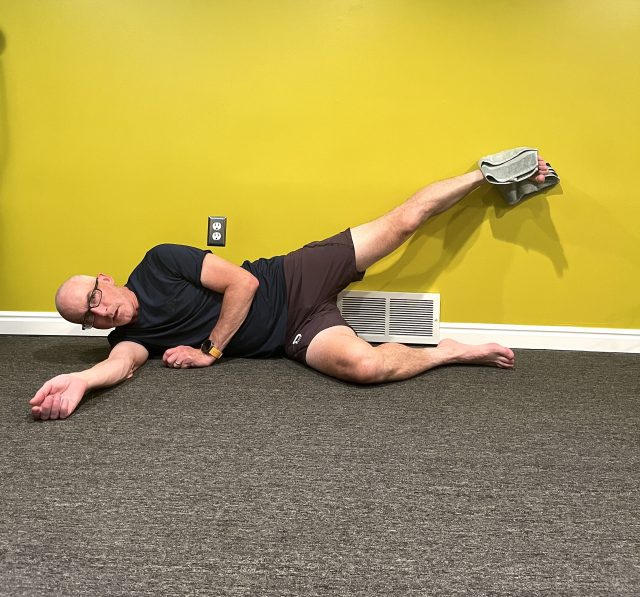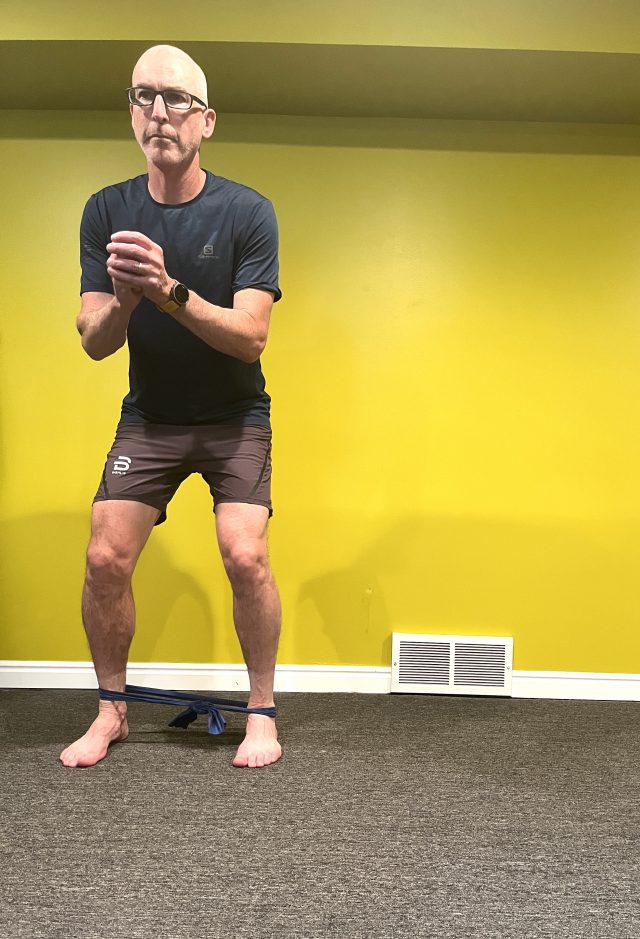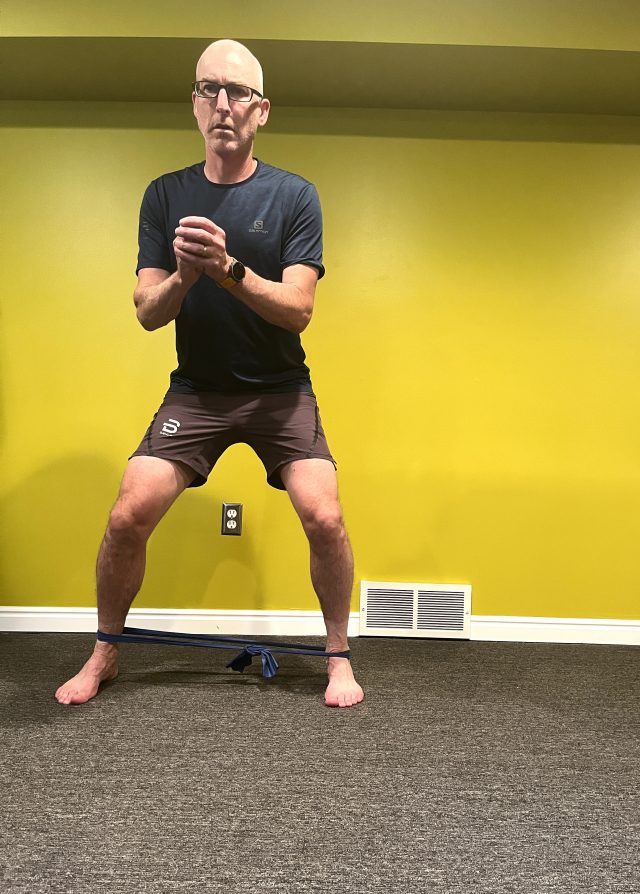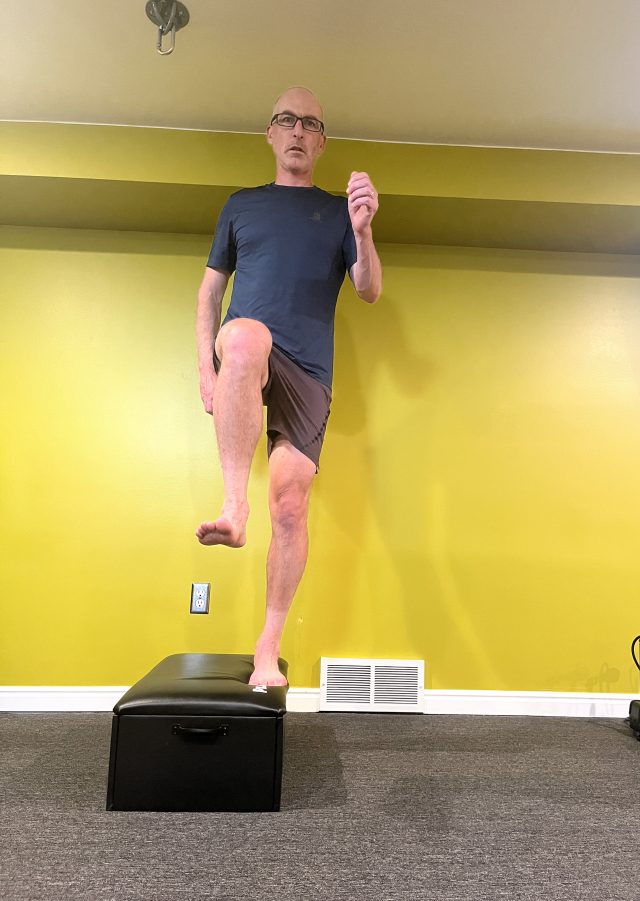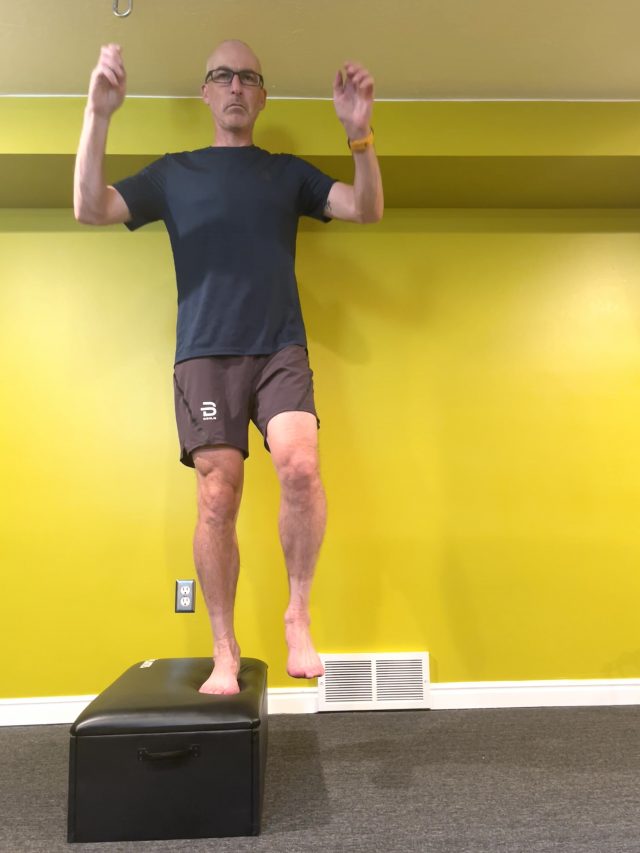One of the beauties of skate skiing for the recreational athlete is that it gets us out of the straight line, sagittal plane motion that is so common with walking, running, and cycling. But this also poses a challenge for those of us who don’t rollerski in the summer: How do we stay conditioned for skate skiing’s lateral motion when there’s no snow on the ground? Fortunately, there’s a long list of exercises that will at least work on the strength and lateral movement at the hips. For this article, I’ve picked some of my favorites, especially ones that don’t require much in the way of special equipment. They are listed in order of lowest to highest intensity. Add these to your routine a couple of times a week—you’re already in the gym at least twice a week for maintenance, right?
Wall Scrubs
- Lie on your side with your butt 4-6 inches from a wall
- Bottom knee is bent and the top leg is straight
- Push the heel of your top leg into the wall and move that leg up and down
- You should be putting a lot of pressure into the wall—think about scrubbing the wall vs just painting it
- Keep your toes pointed forward not up towards the ceiling
- Pelvis stays vertical and quiet. The motion should be isolated at the hip, not from the pelvis tipping. You can put your hand on the side of your pelvis for feedback to monitor potential movement
- You’ll need to be wearing just a sock or use a washcloth on your heel to reduce friction on the wall
- 3 sets of 10-15 reps (if you’re not getting much fatigue with 15x, add a resistance band around your knees)
Banded Side Steps
- Put a resistance band around your ankles
- Bend and the ankles, knees, and hips like the ski stance
- Keeping tension on the band throughout, step sideways leading with the knee rather than reaching with the foot and shifting your weight
- Band position variations: band around the knees is a regression offering less resistance and possibly more cuing to lead with the knee vs the foot; band around the feet is harder with more work at the ankles but requires a durable band not the cheap ones we give to patients in PT
- 2×15-20 steps or whatever length of hallway you have
Curtsy Step Downs
- Stand sideways on the bottom stair or a plyo box
- The foot at the edge of the stair will be the working leg
- With the other leg, reach behind the stance leg and tap the floor then finish with knee high
- The working leg will be doing a single leg squat so look to keep your spine neutral, hinge through the hips, lean forward with the the trunk and your butt goes back
- Ideally, this is also a balance exercise with the non-stance leg never taking any weight. However, if this is a struggle, use a railing or wall for assistance
- You can add weight for additional resistance
- 3 sets of 10x
Lateral Bounding
- Think of these as hopping side steps
- Start in the ski stance position
- Push/hop sideways off the stance leg and land on the other leg in a balanced position
- Switch back to the working leg and go again
- As described, you’ll be moving sideways like down a hallway. If you’re tight on space, you can go back and forth from right leg to left leg but strive to be honest about the balance before the next hop
- Look to do 30 contacts/reps on each side split into sets however your space allows (2×15, 3×10, 5×6, etc)
Lateral Countermovement Jumps
- Stand sideways on the bottom stair or a 8+ inch plyo box
- Step off, landing in the ski stance position on the opposite leg
- Rather than pausing in a balanced position, immediately hop back up to the standing leg on the stair/box
- Think of the landing leg as being a spring or pogo stick that will bounce back after being compressed—the compression will create the ankle, knee, and hip flexion inherent to ski stance, then we want to rebound off quickly and pop back up to the box
- Make sure the work is being done by the landing leg vs just stepping back on the box
- 2 sets of 5-10x. You can add weight or increase the box height for more difficulty (with a med ball or dumbbell held in both hands, move it from chest height while standing on the box to the hip of the landing leg on the floor)
Ned Dowling
Ned lives in Salt Lake City, UT where his motto has become, “Came for the powder skiing, stayed for the Nordic.” He is a Physical Therapist at the University of Utah and a member of the US Ski Team medical pool. He can be contacted at ned.dowling@hsc.utah.edu.


